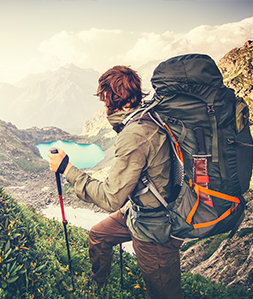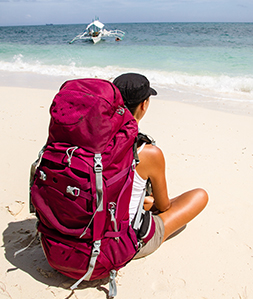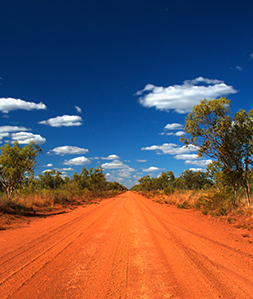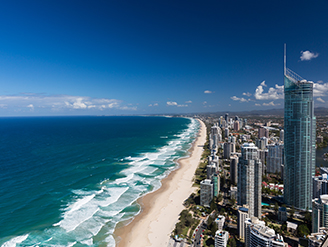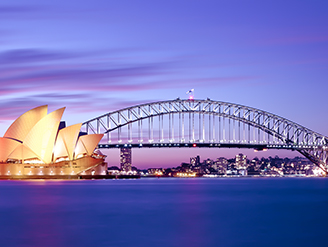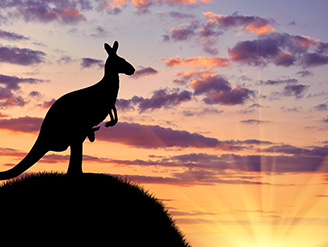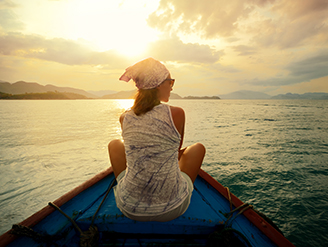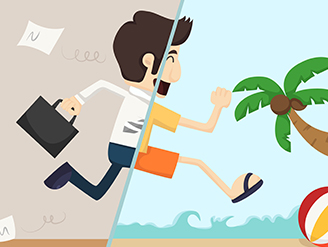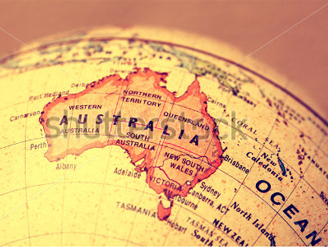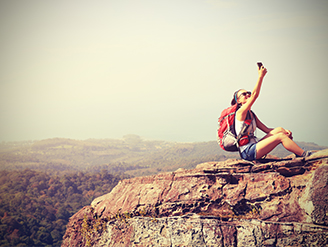
Backpackers often don’t think about personal safety while they are experiencing a working holiday in Australia. However, personal safety should be one of the major considerations for any backpacker travelling in Australia. While Australia is considered to be one of the safest countries in the world there are still many unique safety issues that many backpackers need to be aware of.
Some of these safety issues are common sense and backpackers merely need a reminder, other safety issues are unique and often unknown to backpackers travelling to Australia for the first time. By having an understanding or the various risks found in Australia backpackers are able to take the necessary steps to avoid or minimise the risks they may experience.
By following this guide and obtaining advice from locals and government officials during their holiday to Australia, backpackers can increase their safety and reduce the likelihood of being in a dangerous situation.

Surf and Water Safety
It is unsurprising that most Australian’s live close to the coastline or around Australia’s waterways which inevitably promotes these locations to backpackers coming to Australia on working holidays. Australians and backpackers alike love Australia’s beaches with tens of thousands of people around Australia visiting beaches daily. Unfortunately, Australia’s beaches and waterways are where backpackers are most at risk, especially for those who are weak swimmers and not confident in an aquatic environment. From drowning to spinal injuries backpackers need to be aware of the risks that Australian beaches and waterways present.

Beach Safety
While beaches provide people with a unique opportunity to surf, swim, relax and have fun there are a number of dangers which beachgoers face. Many people fail to realise that the water conditions on Australian beaches can change rapidly causing strong currents and rips. Each year throughout Australia, a number of tourists, are tragically swept to their deaths by rips.
Populated beaches throughout Australia are often patrolled by members of the Surf Lifesaving community, who provide a valuable volunteer service on Australian beaches. There are other beaches that are patrolled by professional lifeguards. Both lifeguards and lifesavers are experts in the area of surf safety and will identify the safest area for people to swim. These areas are highlighted by the world famous red and yellow flags. For backpackers visiting Australia it is important to remember that by swimming between the red and yellow flags they are being monitored by professionals who are able to assist if the backpacker comes into any danger.
Waterways
Another favourite past time for backpackers working in Australia is to visit rivers, dams and other waterways. While these environments provide a perfect opportunity for backpackers to unwind they also have their own hazards. Each year many backpackers throughout Australia are killed or suffer serious spinal injuries when visiting waterways. Many of these incidents occur because the backpackers are unfamiliar with the waterway and don’t heed warning signs that are in the vicinity.
While it may seem to jump from rock ledges and dive into the waterways, often there is hidden dangers underwater that backpackers are unaware of. Submerged rocks, and even wooden logs which are underwater are not always visible to the naked eye. Prior to jumping into any waterway it is essential to locate and read any warning signage and also check the waters physically rather than just looking.
Local residents will also be aware of any specific risks in local waterways, so backpackers should also ask locals if it is safe to swim or jump into any waterways. If backpackers are in doubt, they should avoid entering the water.

Wildlife
Australia has some of the most beautiful wildlife found throughout the world. The wildlife found in Australia is a major attraction for backpackers working in Australia however some of the wildlife can be extremely dangerous. While common sense will generally ensure your safety the wildlife including snakes, sharks, spiders and crocodiles found in Australia are not commonly experienced by backpackers in their own countries.
While shark attacks do occur in Australia, they are extremely rare in comparison with the amount of people swimming around Australia’s coastline each day. Australia also has an active shark netting program on major and popular beaches which reduce the incidence of shark attacks, but backpackers can also reduce their risk by swimming beaches patrolled by lifesavers.
Crocodiles are another hazard for backpackers travelling throughout Australia’s northern regions. It is important that backpackers do not swim in rivers and estuaries in crocodile prone areas and to always observe safety signage. Backpackers travelling around the northern areas of Australia should also seek local advice about safe camping areas to avoid any crocodile encounters while camping.
Continue Reading

Backpackers often don’t think about personal safety while they are experiencing a working holiday in Australia. However, personal safety should be one of the major considerations for any backpacker travelling in Australia. While Australia is considered to be one of the safest countries in the world there are still many unique safety issues that many backpackers need to be aware of.
Some of these safety issues are common sense and backpackers merely need a reminder, other safety issues are unique and often unknown to backpackers travelling to Australia for the first time. By having an understanding or the various risks found in Australia backpackers are able to take the necessary steps to avoid or minimise the risks they may experience.
By following this guide and obtaining advice from locals and government officials during their holiday to Australia, backpackers can increase their safety and reduce the likelihood of being in a dangerous situation.

Surf and Water Safety
It is unsurprising that most Australian’s live close to the coastline or around Australia’s waterways which inevitably promotes these locations to backpackers coming to Australia on working holidays. Australians and backpackers alike love Australia’s beaches with tens of thousands of people around Australia visiting beaches daily. Unfortunately, Australia’s beaches and waterways are where backpackers are most at risk, especially for those who are weak swimmers and not confident in an aquatic environment. From drowning to spinal injuries backpackers need to be aware of the risks that Australian beaches and waterways present.

Beach Safety
While beaches provide people with a unique opportunity to surf, swim, relax and have fun there are a number of dangers which beachgoers face. Many people fail to realise that the water conditions on Australian beaches can change rapidly causing strong currents and rips. Each year throughout Australia, a number of tourists, are tragically swept to their deaths by rips.
Populated beaches throughout Australia are often patrolled by members of the Surf Lifesaving community, who provide a valuable volunteer service on Australian beaches. There are other beaches that are patrolled by professional lifeguards. Both lifeguards and lifesavers are experts in the area of surf safety and will identify the safest area for people to swim. These areas are highlighted by the world famous red and yellow flags. For backpackers visiting Australia it is important to remember that by swimming between the red and yellow flags they are being monitored by professionals who are able to assist if the backpacker comes into any danger.
Waterways
Another favourite past time for backpackers working in Australia is to visit rivers, dams and other waterways. While these environments provide a perfect opportunity for backpackers to unwind they also have their own hazards. Each year many backpackers throughout Australia are killed or suffer serious spinal injuries when visiting waterways. Many of these incidents occur because the backpackers are unfamiliar with the waterway and don’t heed warning signs that are in the vicinity.
While it may seem to jump from rock ledges and dive into the waterways, often there is hidden dangers underwater that backpackers are unaware of. Submerged rocks, and even wooden logs which are underwater are not always visible to the naked eye. Prior to jumping into any waterway it is essential to locate and read any warning signage and also check the waters physically rather than just looking.
Local residents will also be aware of any specific risks in local waterways, so backpackers should also ask locals if it is safe to swim or jump into any waterways. If backpackers are in doubt, they should avoid entering the water.

Wildlife
Australia has some of the most beautiful wildlife found throughout the world. The wildlife found in Australia is a major attraction for backpackers working in Australia however some of the wildlife can be extremely dangerous. While common sense will generally ensure your safety the wildlife including snakes, sharks, spiders and crocodiles found in Australia are not commonly experienced by backpackers in their own countries.
While shark attacks do occur in Australia, they are extremely rare in comparison with the amount of people swimming around Australia’s coastline each day. Australia also has an active shark netting program on major and popular beaches which reduce the incidence of shark attacks, but backpackers can also reduce their risk by swimming beaches patrolled by lifesavers.
Crocodiles are another hazard for backpackers travelling throughout Australia’s northern regions. It is important that backpackers do not swim in rivers and estuaries in crocodile prone areas and to always observe safety signage. Backpackers travelling around the northern areas of Australia should also seek local advice about safe camping areas to avoid any crocodile encounters while camping.

Snake and spider bites are also relatively rare, but in the summer and warmer months, backpackers should take extra precautions to avoid being bitten. When travelling through bushland or hiking, backpackers wear sturdy covered footwear and long pants. While snake and spider bites are rarely fatal, it is extremely important to backpackers to obtain immediate medical attention if bitten.
Marine stingers are another hazard encountered in tropical waterways between November and April. It is advised that if backpackers want to swim in these areas they should only do so in stinger resistant swimming enclosures.

The Australian Outback
Australia’s outback and desert locations are a major attraction for many backpackers who come to Australia for a working holiday. From Alice Springs and Ayres Rock to the Nullabor and the Giles Ranges there is ample opportunity for backpackers to adventure through some of Australia’s most remote locations. While many backpackers do travel through these areas without a problem, it is important to remember that these areas are rugged and often times backpackers will be in these locations with no nearby assistance should something happen.
To ensure their safety, before venturing into Australia’s remote locations, backpackers should develop a detailed itinerary of the locations they are going to visit. Preparation is the key to survival if something happens while travelling through remote locations and it is essential that backpackers ensure that they have sufficient supplies of food, water, clothing and spare parts for their vehicles.
Backpackers also need to make sure they have sufficient fuel supplies to not only reach their destination, but also to account for any unexpected detours they may be required to make. It is also highly recommended that backpackers purchase or hire an EPIRB system so that they can alert authorities if an incident occurs.
Backpackers should also advise authorities such as the local police of when they are leaving and their expected return date, so that a search can be undertaken if they don’t return by their due date. The most important safety consideration for backpackers is to always stay with their vehicle if something happens. The majority of deaths in remote locations occur when backpackers leave their vehicles.

Natural Disasters
Each year Australia experiences a range of natural disasters from bushfires and floods to cyclones and heatwaves. Each of these natural events plays a part of Australia’s national identity and in the majority of instances they provide no cause for alarm, so long as backpackers follow the advice of emergency services and government agencies in the event of a natural disaster occurring.
The natural disasters that are experienced in Australia are geographically unique. While cyclones are experienced in Northern Australia, the southern states of Australia are more likely to experience life threatening bushfires. Backpackers should check the natural disasters that are likely to occur in the areas they are intending to visit so that they can be prepared for anything that arises.
Crime and Violence
While Australia is considered to be a relatively safe country when it comes to crime and violence, just like any location throughout the world crime does occur. It is essential that backpackers make smart decisions about there safety and security just like they would in their own country.
So long as backpackers to Australia are aware that there are risks and take steps to avoid those risks, then their time in Australia will more than likely proceed without incident.
Drink Spiking
Drink spiking is a major concern in Australia and involves unsuspecting victims having their drinks spiked in nightclubs or bars with drugs. In most cases, drink spiking is carried out by men wishing to take advantage of women sexually however; there have many instances where men have had their drinks spiked with the intention of stealing their property. Backpackers need to ensure that they always keep their drinks close to them and avoid having people they don’t know buying them drinks.
Hitchhiking
Hitchhiking may seem like a cheap travel alternative for backpackers visiting Australia. While it may be a cheap travel option backpackers risk getting into vehicles with unsavoury people and having little options to escape from a moving vehicle.
While in most instances, the backpacker will be picked up by a well meaning traveller there have been many instances where hitchhiking backpackers have met with foul play. Backpackers are advised to avoid any form of hitchhiking while they are in Australia.
Violence
From a political standpoint, it is unlikely that backpackers in Australia will be confronted with politically motivated violence.
The main instances of violence that occur in Australia are alcohol fuelled and generally occur in nightclub precincts. Backpackers should remain vigilant when in nightclubs and aware of people becoming aggressive and also avoid dark alley ways surrounding nightclub areas. Many nightclub precincts in Australia now have designated taxi zones that are manned by security and law enforcement officials, backpackers are advised to catch taxi’s from these locations to ensure their safety.
It is important that backpackers only venture out with friends and as there is safety in numbers when visiting nightclub precincts. By remaining vigilant and alert backpackers will decrease their chances of experiencing a violent situation.

Conclusion
Australia is a relatively safe destination for backpackers. Like all countries there are hazards encountered in Australia that backpackers need to be mindful of. By taking some simple precautions and using common sense backpackers will ensure their safety throughout the length of their journey.
It is usually when backpackers let down their guard and become caught up in the experience and put good times ahead of common sense that they will experience an incident which has the possibility to cause them harm. Backpackers who display common sense and remain alert and vigilant in the local environment will be best placed to experience a safe and enjoyable holiday within Australia.







